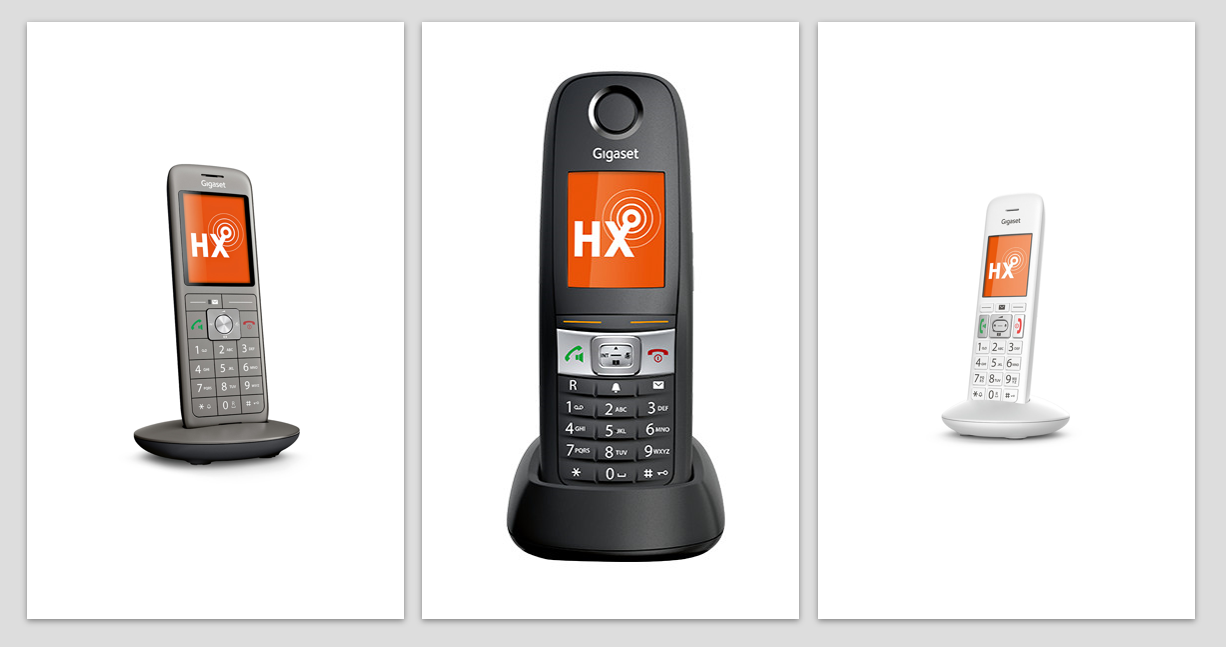
HX – two letters that make everything easier
11. December 2018 Published by Raphael DoerrTechnology can sometimes drive us crazy – especially when you try to get products from different manufacturers to work with each other. One device functions fine, but not together with the other. Or you need to adjust some setting or other. But just what? We at Gigaset don’t want you to have the hassle of dealing with such matters. Specifically with our universal handsets. They are identified by the label “HX” and work with no hitches at all – with any DECT base station or directly on DECT and CATiq routers.
HD voice and IP convenience features
Digital telephony is already possible in many households – a fact often unnoticed by customers. That’s because many operators, such as Telekom, have already converted their customer lines to telephony via Internet Protocol, or IP telephony. It means that calls are no longer carried through a phone line, but are transmitted as digital data over the Internet via router.
Benefits of the new technology: outstanding HD sound, three numbers per line, and the ability to hold multiple calls at the same time. The difference between the old telephone quality and HD voice is similar to the difference between a gramophone and a record player. And what has long been possible with smartphones thanks to the expansion of high-speed mobile networks has now made its way to IP telephony in the fixed network. The HD voice standard uses a wider bandwidth and offers brilliant voice and audio quality. But in order to appreciate all these benefits, you need the right equipment.
HX lets you forget the technical stuff
Modern routers with a DECT or CATiq interface are a telephone system and answering machine in one: Handsets can be directly coupled, making their location completely independent of the telephone socket. But in order to take advantage of everything the IP connection has to offer, the right handset is required. That’s because the routers from AVM and Telekom don’t speak the same language: The FRITZ!Box primarily uses DECT and supports CAT-iq 2.0-capable handsets beginning with FRITZ!OS 6.80. In contrast, the Speedport uses only the CAT-iq standard.
“We wanted to keep these technical issues away from our customers,” says Michael Zenz from Gigaset. “That’s why our universal handsets work with both protocols. They are fully compatible with most routers in German households. Consumers don’t have to know which model they have from which manufacturer – with our HX series, they’re always good to go. Next year, we plan to expand our range and bring out even more stylish HX devices.” The HX series works with all routers based on DECT – the initial registration is as uncomplicated as with regular telephones.
The HX universal handsets from Gigaset are available with different features at prices ranging from €49.99 to €139.99 (MSRP) at retailers and the Gigaset Online Shop.
 Comments
Comments

 en
en 







